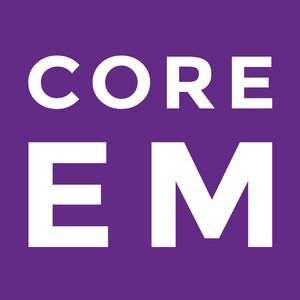Show NotesTable of Contents
0:00 – Introduction
0:41 – Overview
1:10 – Types of Necrotizing Fasciitis
2:21 – Pathophysiology & Risk Factors
3:16 – Clinical Presentation
4:06 – Diagnosis
5:37 – Treatment
7:09 – Prognosis and Recovery
7:37 – Take Home points
IntroductionNecrotizing soft tissue infections can be easily missed in routine cases of soft tissue infection.High mortality and morbidity underscore the need for vigilance.
DefinitionA rapidly progressive, life-threatening infection of the deep soft tissues.Involves fascia and subcutaneous fat, causing fulminant tissue destruction.High mortality often due to delayed recognition and treatment.
Types of Necrotizing FasciitisType I (Polymicrobial)Involves aerobic and anaerobic organisms (e.g., Bacteroides, Clostridium, Peptostreptococcus).Common in immunocompromised patients or those with comorbidities (e.g., diabetes, peripheral vascular disease).
Type II (Monomicrobial)Often caused by Group A Streptococcus (Strep pyogenes) or Staphylococcus aureus.Can occur in otherwise healthy individuals.Vibrio vulnificus (associated with water exposure) is another example.
Fournier’s Gangrene (Subset)Specific to perineal, genital, and perianal regions.Common in diabetic patients.Higher mortality, especially in females.
PathophysiologySpread Along FasciaPoor blood supply in fascial planes allows infection to advance rapidly.Tissue ischemia worsened by vascular thrombosis → rapid necrosis.
High-Risk PatientsDiabetes with vascular compromise.Recent surgeries or trauma (introducing bacteria into deep tissue).Immunosuppression (e.g., cirrhosis, malignancy, or immunosuppressive meds).NSAID use may mask symptoms, delaying diagnosis.
Clinical PresentationEarly Signs & Symptoms
Severe Pain out of proportion to exam findings.Erythema (often with indistinct borders).Fever, Malaise (systemic signs of infection).Rapid progression with possible color changes (red → purple).Bullae Formation (fluid-filled blisters) and skin necrosis/gangrene.Crepitus in polymicrobial cases (gas production in tissue).
Late-Stage Signs
Systemic toxicity: hypotension, multi-organ failure if untreated.
DiagnosisClinical Suspicion Is KeyPain out of proportion, rapid progression, systemic signs.The “finger test” (small incision to explore fascial planes).
Surgical ConsultationEarly surgical exploration is often the definitive diagnostic step.
Lab TestsLRINEC Score (CRP, WBC, Hemoglobin, Sodium, Creatinine, Glucose) to stratify risk.Not definitive but can guide suspicion.
ImagingCT scan may reveal gas in tissues, fascial edema, or muscle involvement.
Must not delay surgical intervention if clinical suspicion is high.Treatment PrinciplesImmediate & Aggressive Surgical DebridementOften multiple surgical procedures are required as necrosis progresses.Debridement back to healthy tissue margins.
Empiric Broad-Spectrum AntibioticsCover gram-positive (including MRSA), gram-negative, and anaerobes.Examples include:Vancomycin or Linezolid (for MRSA).Piperacillin-tazobactam or Carbapenems (for gram-negative & anaerobes).
Clindamycin (to inhibit bacterial toxin production).Adjust based on culture results later.
Adjunct TherapiesHyperbaric Oxygen Therapy (if available) for resistant cases.Evidence is mixed; not universally accessible.
Supportive CareIntensive monitoring, often in an ICU setting.Fluid resuscitation & vasopressors for septic shock.
Prognosis & DispositionHigh Mortality RateInfluenced by infection site, patient’s baseline health, and speed of intervention.
Importance of Rapid InterventionEarly recognition, aggressive surgery, and antibiotics improve survival.
Long-Term ConsiderationsPatients may require extensive rehabilitation.Reconstructive surgery often needed for tissue deficits.
DispositionOperative management is mandatory; patients do not go home.Critical care admission is typical for hemodynamic monitoring and support.
Five Key Take-Home PointsHigh Suspicion Saves Lives: Recognize severe pain out of proportion as a critical red flag.Know Your NF Types & Risk Factors: Type I polymicrobial vs. Type II monomicrobial, plus subsets (Fournier’s).Clinical Diagnosis Above All: LRINEC and imaging help, but timely surgical exploration is paramount.Combined Surgical & Medical Therapy: Early debridement + broad-spectrum antibiotics (including toxin inhibition) is lifesaving.Extended Recovery & Mortality Risks: High mortality if missed or delayed. Expect prolonged rehab and possible multiple surgeries.
Resources & Further ReadingLRINEC Score Calculator EMCrit – Necrotizing Fasciitis
